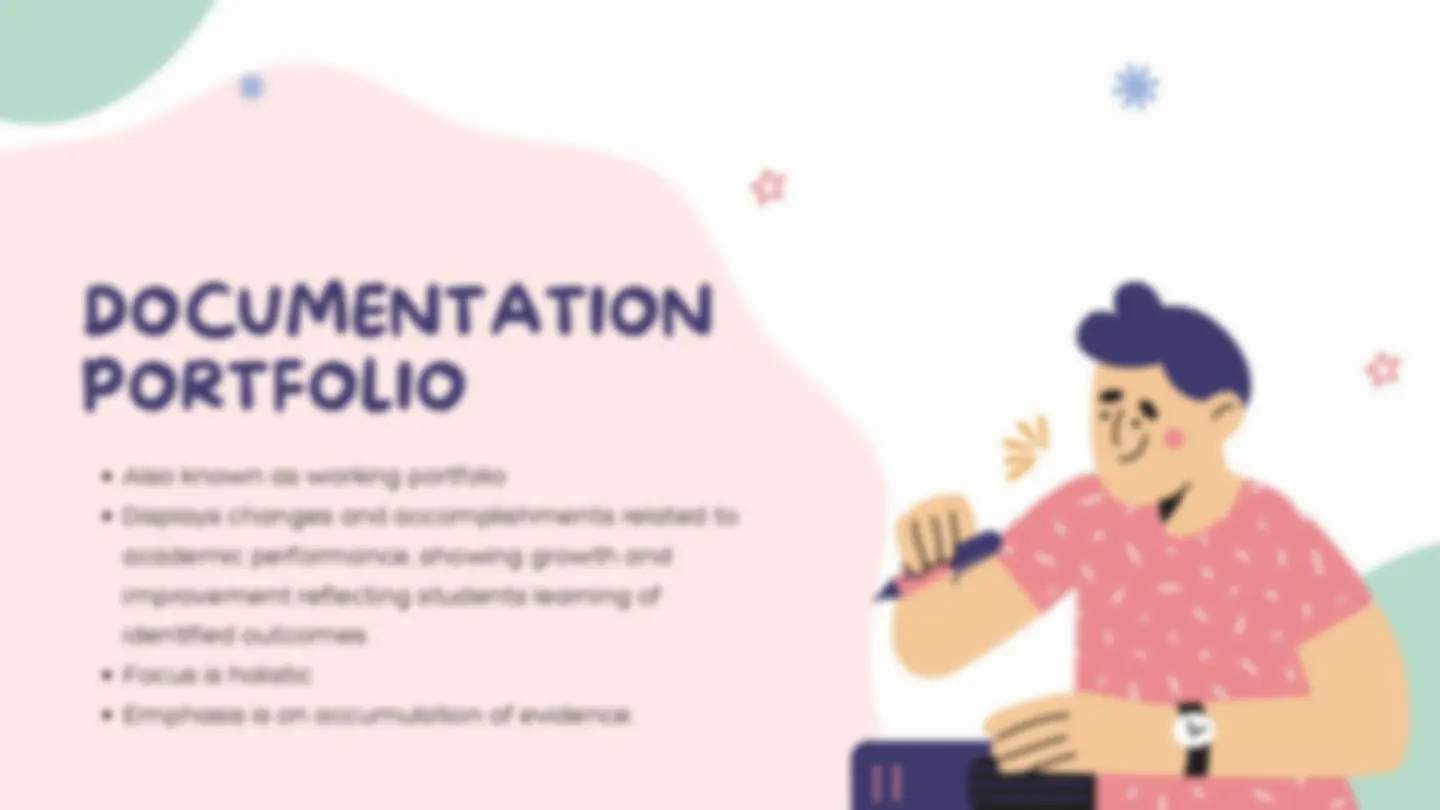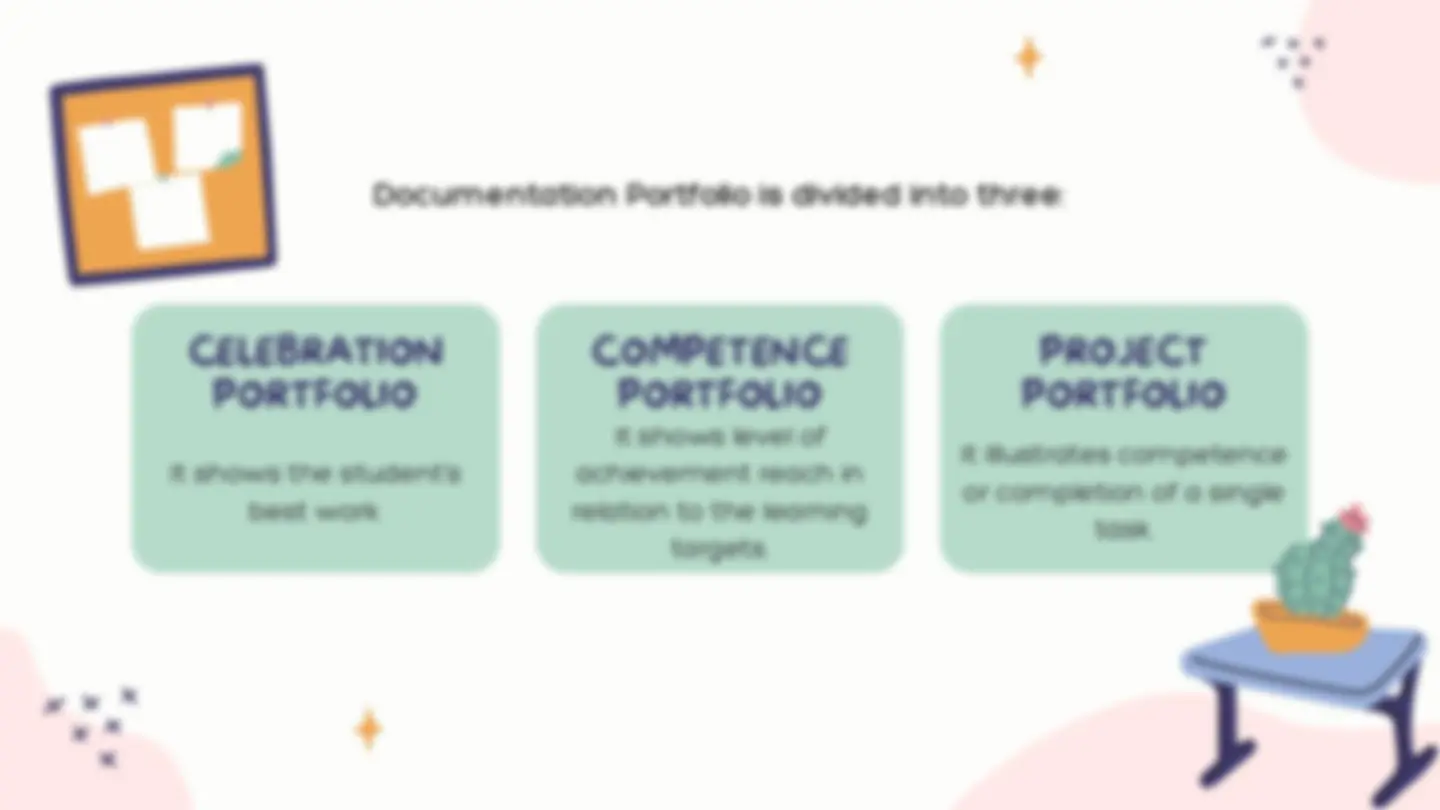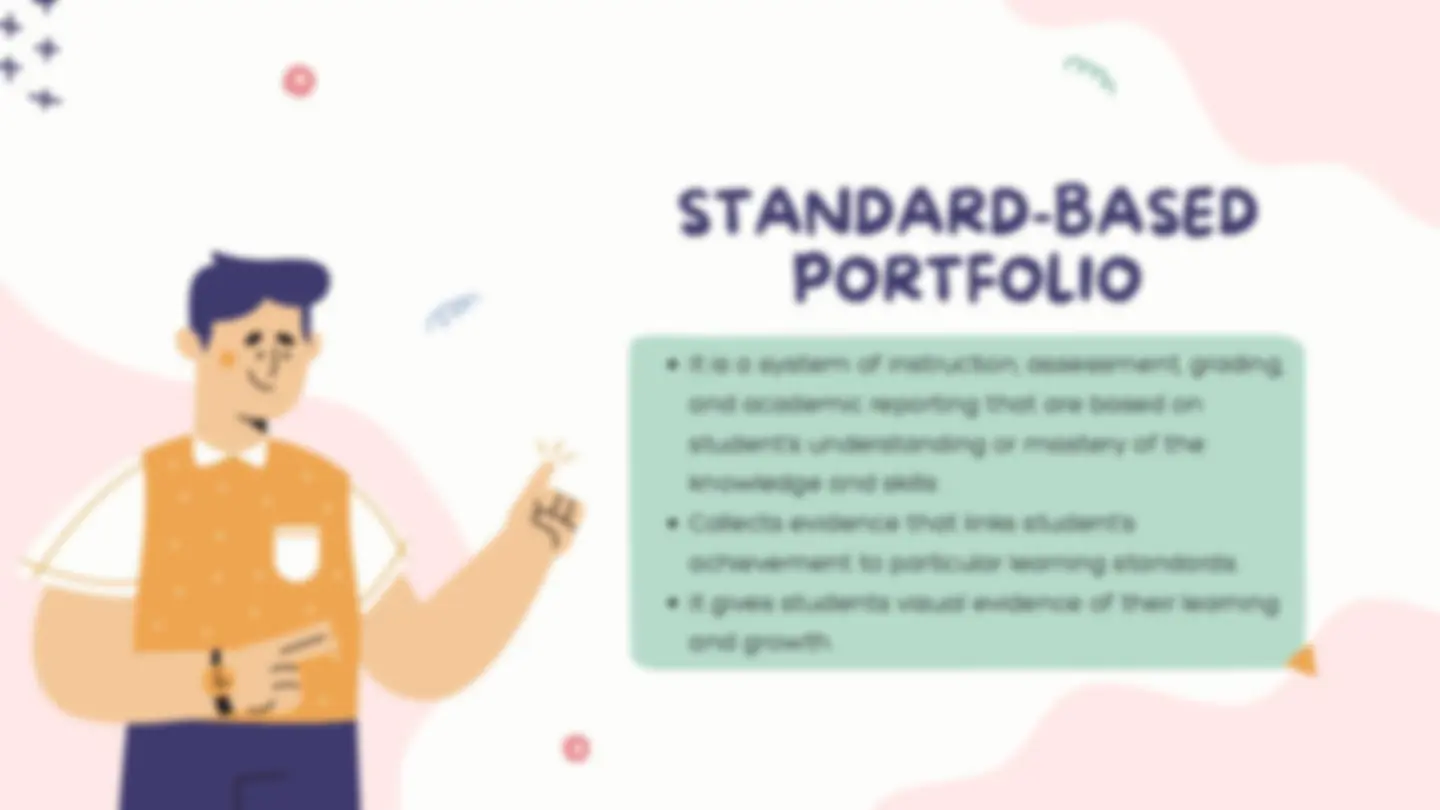






Study with the several resources on Docsity

Earn points by helping other students or get them with a premium plan


Prepare for your exams
Study with the several resources on Docsity

Earn points to download
Earn points by helping other students or get them with a premium plan
Community
Ask the community for help and clear up your study doubts
Discover the best universities in your country according to Docsity users
Free resources
Download our free guides on studying techniques, anxiety management strategies, and thesis advice from Docsity tutors
The different types of portfolios used in education. It explains the characteristics of each type of portfolio, including Showcase, Documentation, Process, Product, Standard-Based, Celebration, and Competence portfolios. The document also emphasizes the importance of using portfolios for classroom-level assessment purposes and provides examples of how portfolios can be used to document student growth and achievement. Overall, this document serves as a useful guide for educators who want to implement portfolio-based assessment in their classrooms.
Typology: Summaries
1 / 8

This page cannot be seen from the preview
Don't miss anything!





TYPES OF PORTFOLIO Ø Showcase Portfolio Ø Documentation Portfolio Ø Process Portfolio Ø Product Portfolio Ø Standard-Based Portfolio
DOCUMENTATION PORTFOLIO Also known as working portfolio Displays changes and accomplishments related to academic performance, showing growth and improvement reflecting students learning of identified outcomes. Focus is holistic Emphasis is on accumulation of evidence.
CELEBRATION PORTFOLIO COMPETENCE PORTFOLIO
Documentation Portfolio is divided into three:
PROJECT PORTFOLIO
PRODUCT PORTFOLIO Focuses on accomplishments and best work at the mastery level. Contains the final product as well as detailed explanations. Used to provide the data needed to develop, assess, and even adjust any product strategy. This is similar to the Process Portfolio, except that its focus is on the end product rather than on the process of product.
It is a system of instruction, assessment, grading, and academic reporting that are based on student’s understanding or mastery of the knowledge and skills. Collects evidence that links student’s achievement to particular learning standards. It gives students visual evidence of their learning and growth.